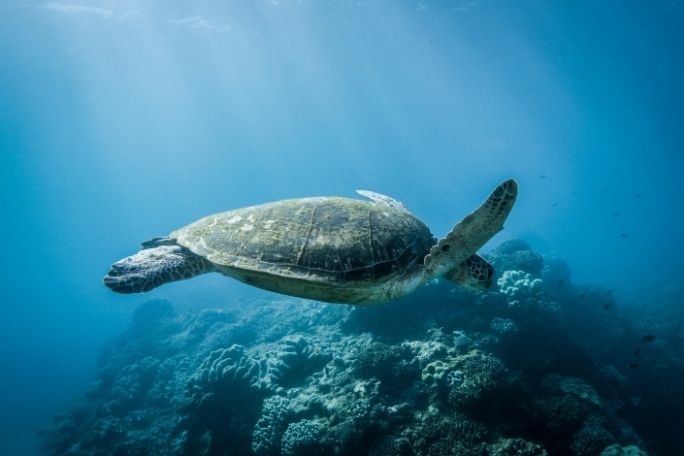Lesson summary
This lesson incorporates clips from Blue The Film as learning inspiration. Students will take on the role of a data scientist to understand what has been happening in Australia’s fishing industry over time. Using a large data set, students organise and analyse Australian Government data. This lesson brings together real world data, statistical analysis, and meaningful problem solving. Students use these elements to make recommendations to the Australian fishing industry in order to conserve our oceans.
Learning intentions:
Students will...
- organise and analyse a large data set in order to draw conclusions about the fishing industry in Australia.
Success criteria:
Students can...
- be able to use Microsoft Excel to organise a large data set
- be able to describe bivariate data presented in a table or graph
- be able to use data to draw conclusions about a societal issue.
Lesson guides and printables
Lesson details
Curriculum mapping
Australian curriculum content descriptions:
Year 10 Mathematics:
- Investigate and describe bivariate numerical data where the independent variable is time (ACMSP252).
Syllabus outcomes: MA5.2-1WM, MA5.2-3WM, MA5.2-16SP
General capabilities: ICT Capability, Critical and creative thinking
Cross-curriculum priority: Sustainability OI.3, OI.9
Relevant parts of Year 10 Mathematics achievement standards: Students describe bivariate data where the independent variable is time. They describe statistical relationships between two continuous variables. Students evaluate statistical reports.
Unit of work: Blue The Film – Mathematics – Year 7 – 10
Time required: 80 mins.
Level of teacher scaffolding: Medium – oversee activities and lead students in discussion.
Resources required
- Student Worksheet – one copy per student
- Device capable of presenting a clip to the class
- Annual Logbook Catch-Data – student and teacher access (note: Microsoft Excel, not Google docs, is required). You will need to project this onto a screen.
- Student access to laptops/desktop computers with Microsoft Excel
Skills
This lesson is designed to build students’ competencies in the following skills:
- Communication
- Critical thinking
- Digital literacy
- Initiative
Additional info
Blue is a feature documentary film charting the drastic decline in the health of our oceans. With more than half of all marine life lost and the expansion of the industrialization of the seas, the film sets out the challenges we are facing and the opportunities for positive change. Blue changes the way we think about our liquid world and inspires the audience to action. Find out how to screen or download the film here. Along with the film is an ambitious global campaign to create advocacy and behaviour change through the #oceanguardian movement. To become an ocean guardian, see the website.


Welcome back!
Don't have an account yet?
Log in with:
By signing up to Cool.org you consent and agree to Cool's privacy policy to
store, manage and process your personal information. To read more, please see
our privacy policy here(Opens in new tab).
Create your free Cool.org account.
Many of our resources are free, with an option to upgrade to Cool+ for premium content.
Already have an account?
Sign up with:
By signing up to Cool.org you consent and agree to Cool's privacy policy to
store, manage and process your personal information. To read more, please see
our privacy policy here(Opens in new tab).